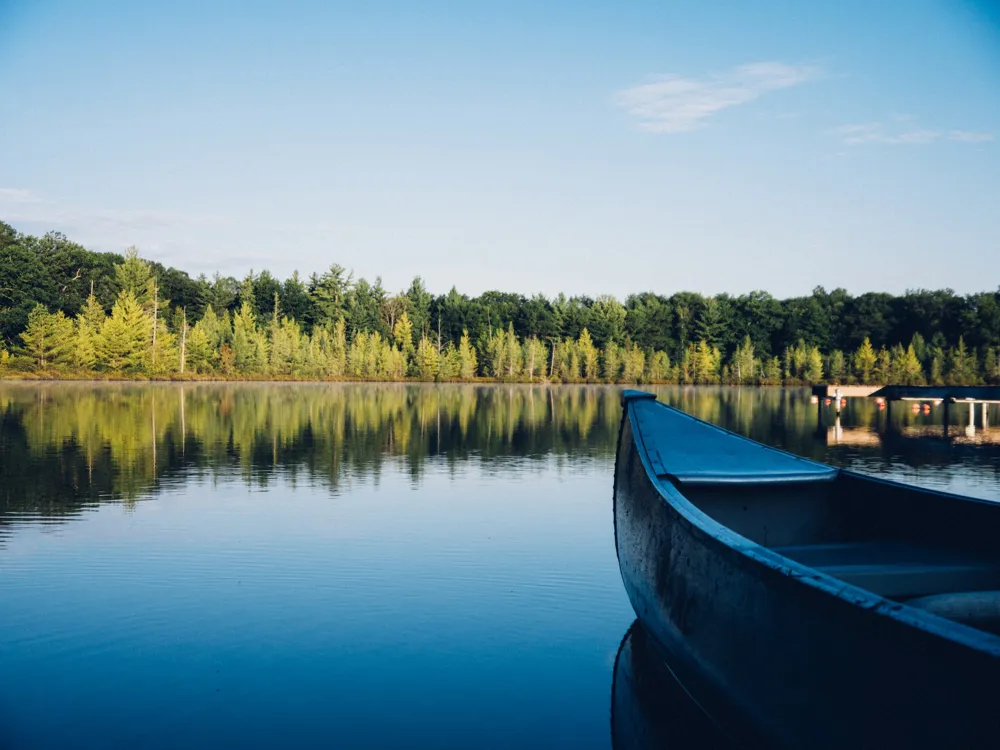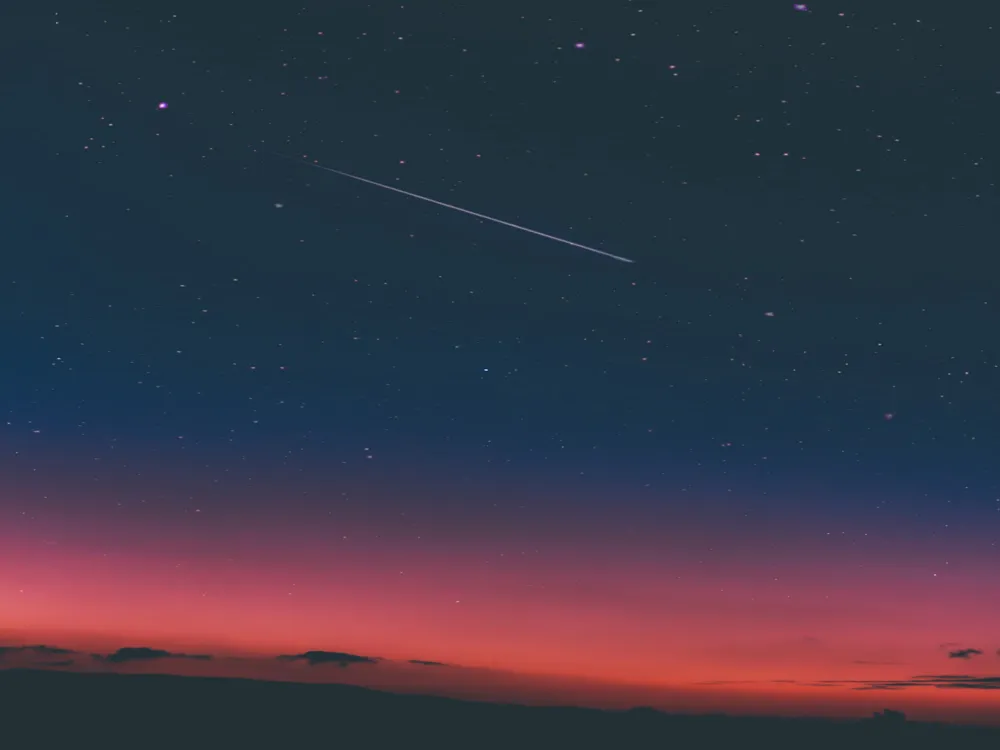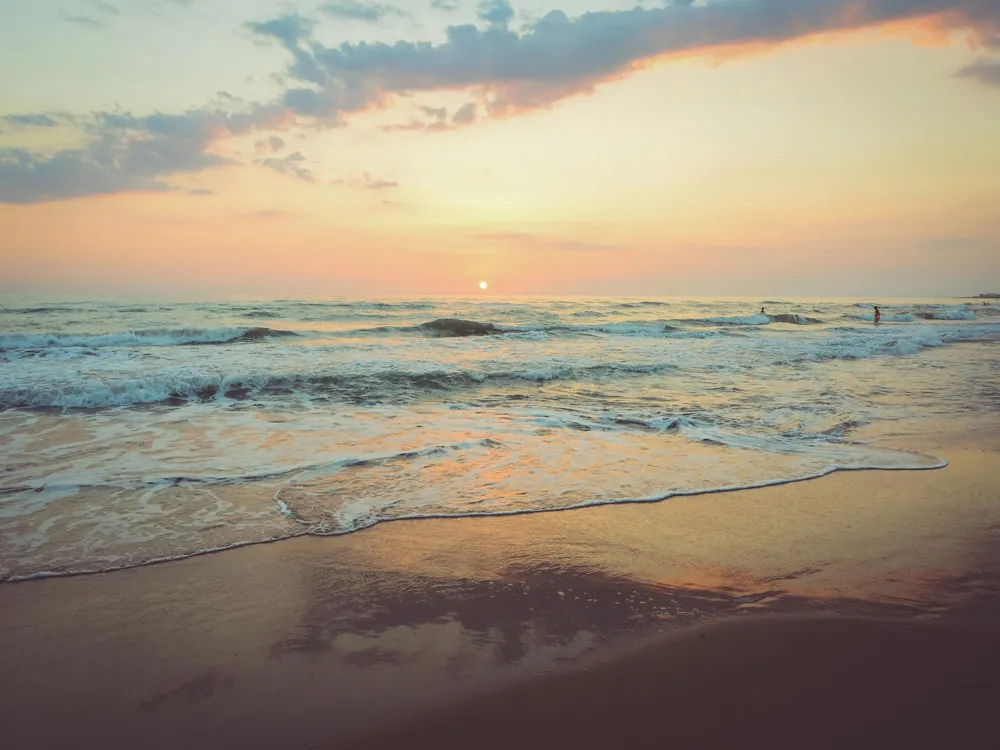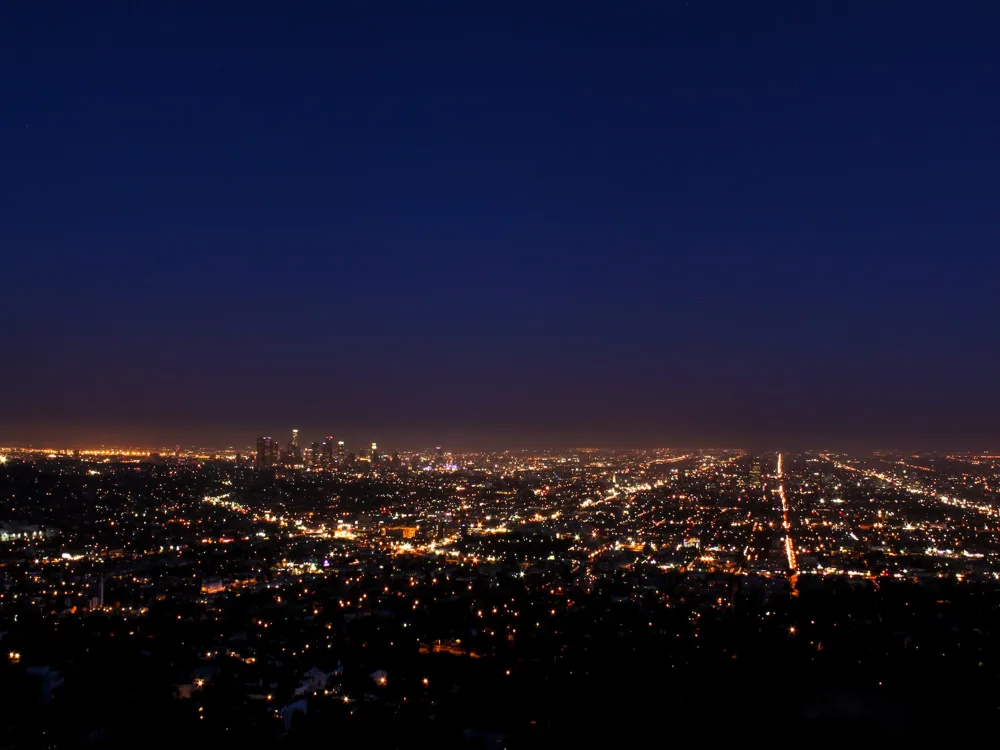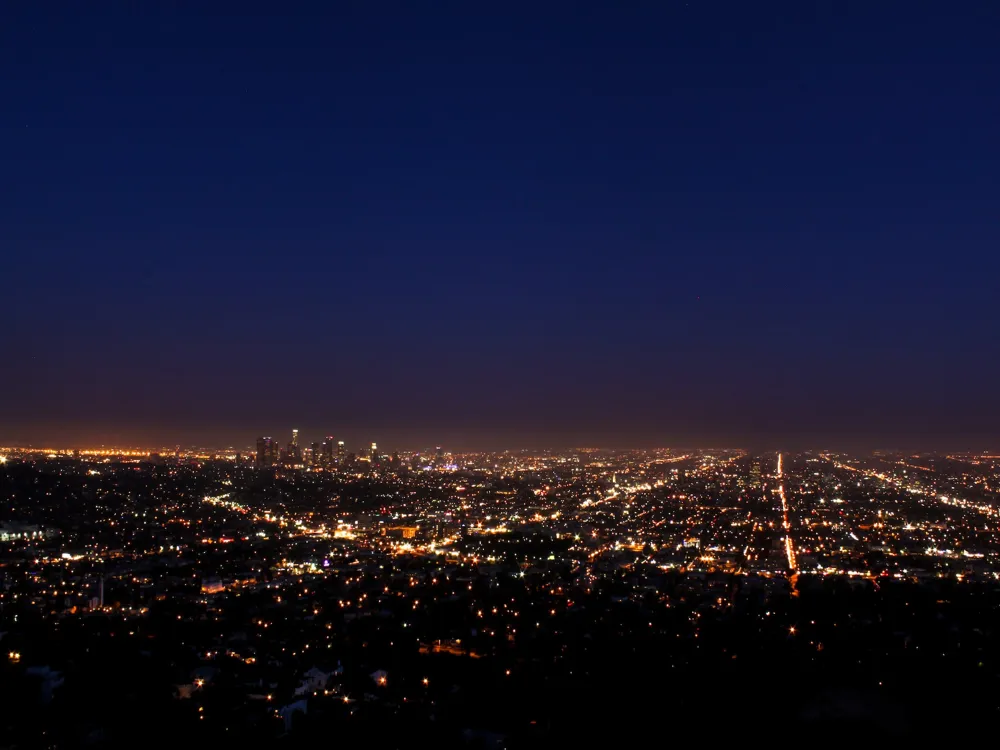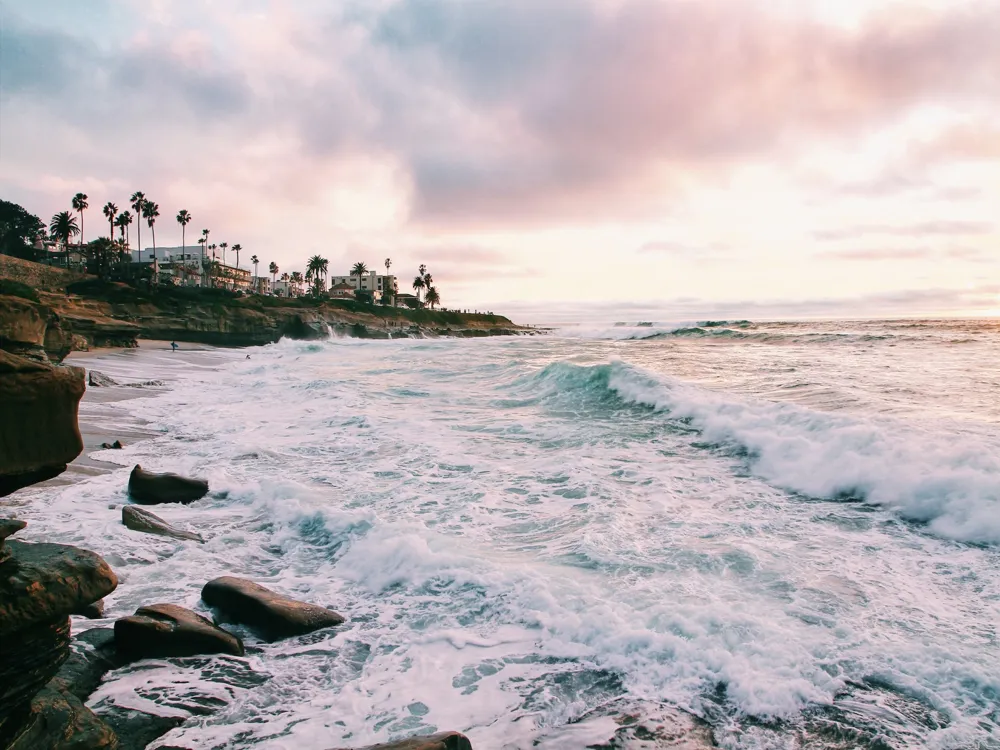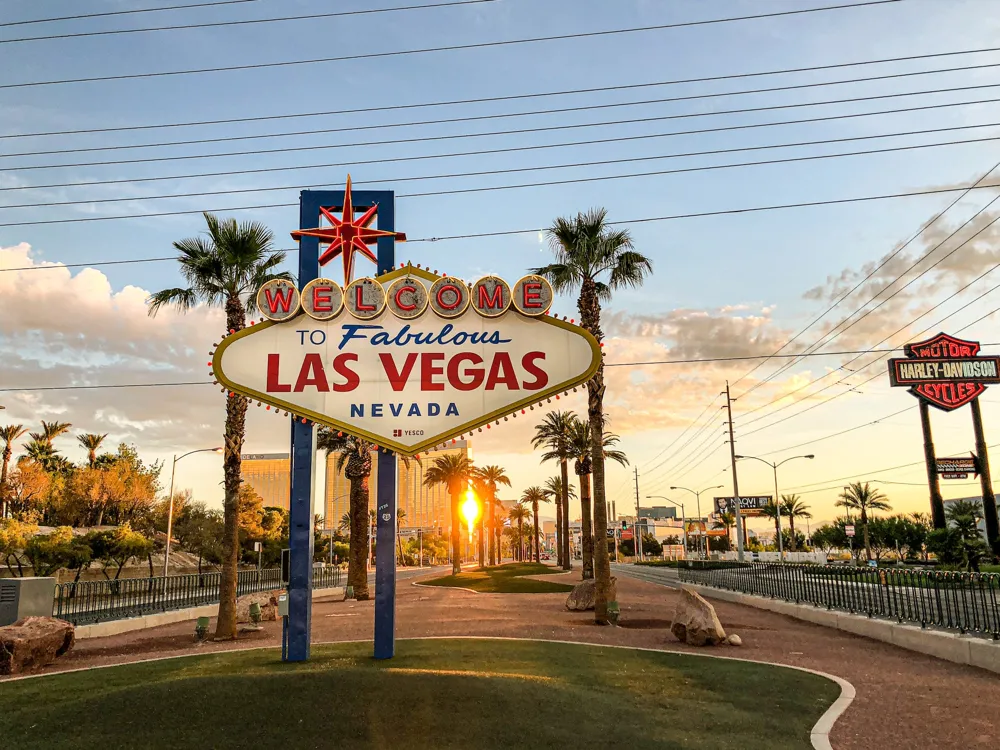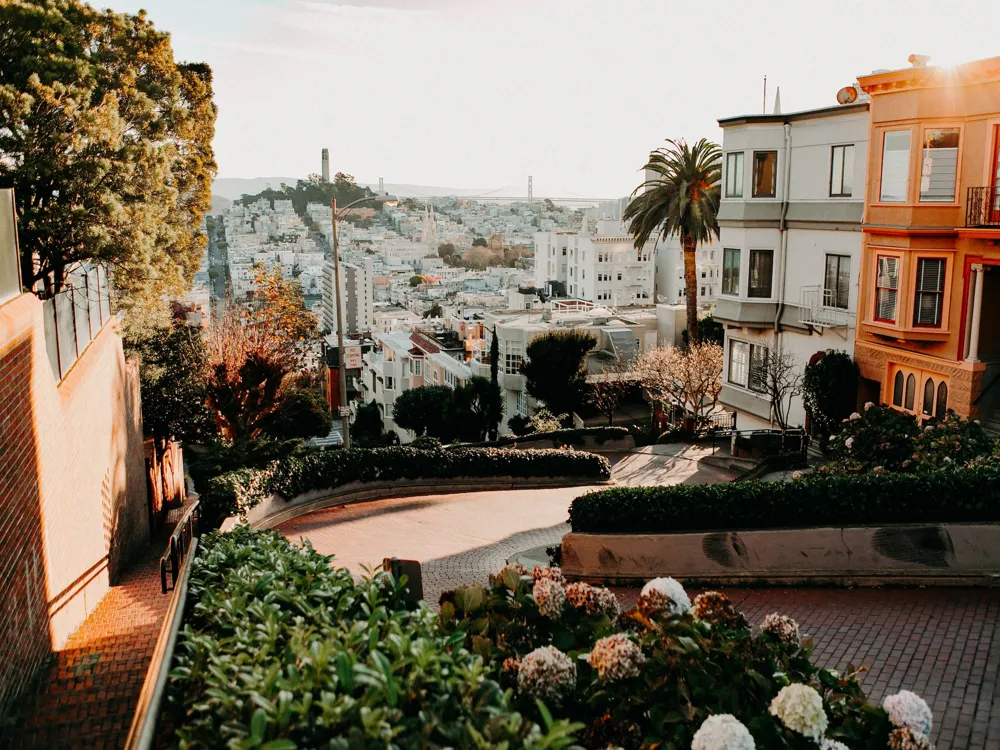El Matador State Beach, a hidden gem in the Malibu region of Los Angeles, California, is a picturesque destination that captivates visitors with its stunning natural beauty. Known for its rugged coastline, unique rock formations, and breathtaking sunset views, this beach is a paradise for photographers, nature lovers, and those seeking a serene escape from the bustling city life. Stretching along the Pacific Coast Highway, El Matador Beach is part of the Robert H. Meyer Memorial State Beach, which also includes La Piedra and El Pescador beaches. What sets El Matador apart is its dramatic landscape, featuring towering sea stacks, deep blue waters, and caves carved by the relentless waves. Visitors to this beach are often struck by the contrast between the soft sandy shores and the imposing rock formations, creating a surreal and almost otherworldly atmosphere. The beach's natural beauty is further enhanced by the rich marine life and diverse bird species that call this area home. Dolphins, sea lions, and various seabirds can be frequently spotted along the coastline, making it an ideal spot for wildlife watching. The flora surrounding the beach, comprising coastal sage scrub and native plants, adds to its ecological significance and natural charm. El Matador State Beach also holds a special place in the hearts of Californians due to its historical and cultural significance. The Chumash people, who once inhabited this region, considered the beach a sacred site. Today, it serves as a reminder of California's rich indigenous history and the need to preserve such natural treasures for future generations. In addition to its natural and historical allure, El Matador Beach is a favored location for romantic getaways, family outings, and solitary retreats. Its secluded coves and hidden nooks provide the perfect backdrop for intimate moments, while the expansive shoreline is ideal for picnics, beach games, and relaxation. The beach's popularity is evident in the numerous weddings, photoshoots, and film productions that take place here, further testament to its enchanting appeal. The architecture of El Matador State Beach is not man-made but carved by nature's own hands. This beach's unique geological features make it an architectural marvel in its own right. The most striking elements are the sea stacks, towering rock formations that have withstood the test of time and elements. These monolithic structures, sculpted by the Pacific's powerful waves and winds, stand as natural monuments, each telling a story of geological history spanning millions of years. Alongside these imposing sea stacks, the beach is adorned with intricately shaped caves and arches. These natural structures, created by the relentless pounding of the ocean waves, offer a fascinating glimpse into the dynamic forces shaping our coastline. Visitors often find themselves mesmerized by the interplay of light and shadow within these caves, creating an ethereal and otherworldly ambiance that is both captivating and serene. The cliffs overlooking El Matador Beach add another layer to its natural architecture. These steep, rugged formations, blanketed in coastal vegetation, provide a stark contrast to the smooth sandy beach below. The cliffs not only serve as a dramatic backdrop but also as a vital component of the beach's ecosystem, supporting a variety of plant and animal life and contributing to the overall biodiversity of the region. The sandy shores of El Matador Beach themselves are a testament to the ever-changing landscape sculpted by natural forces. The patterns of the sand, shaped by tides and winds, are like an artist's canvas, constantly being redrawn and reshaped. This ever-evolving terrain reminds us of the beach's dynamic nature and the powerful processes at play in our natural world. El Matador's natural architecture extends below the water's surface, where hidden rock formations and marine habitats abound. The underwater topography, characterized by rocky outcrops and kelp forests, provides a haven for marine life, including various fish species, crustaceans, and marine mammals. This unseen architectural wonder plays a crucial role in maintaining the ecological balance and health of the coastal ecosystem. Parking at El Matador State Beach is limited, so it's advisable to arrive early, especially during weekends and holidays. There is a small parking lot on the bluff with a fee, and street parking is available along the Pacific Coast Highway. Keep in mind that the descent to the beach involves a steep trail and stairs, so wear comfortable shoes and be prepared for a moderate hike. El Matador Beach is stunning year-round, but the best time to visit is during low tide when more of the beach is accessible, and the rock formations are fully visible. Sunrise and sunset offer the most spectacular views, with the golden light creating a magical atmosphere. Weekdays are less crowded, providing a more tranquil experience. Be aware of the tides and stay clear of areas that can be cut off during high tide. Keep a safe distance from the cliffs as falling rocks can be a hazard. Swimming is allowed, but be cautious of strong currents and undertows. Always supervise children closely. Help preserve the natural beauty of El Matador by adhering to the Leave No Trace principles. Take all trash with you, stay on designated paths to protect vegetation, and avoid disturbing wildlife. This helps ensure that the beach remains pristine for all to enjoy. El Matador is a photographer's dream, so don't forget your camera. It's also great for picnics, sunbathing, and exploring the caves and tide pools. However, note that amenities are limited, so bring your water, snacks, and sun protection. El Matador State Beach is easily accessible from Los Angeles. It's located approximately 10 miles west of Malibu on the Pacific Coast Highway (Highway 1). From Los Angeles, take the 10 West until it turns into the Pacific Coast Highway and continue north. The beach is well-signposted, and the entrance is located between Broad Beach and Decker Road. Public transportation options are limited, so driving is the most convenient way to reach El Matador. Car rental services and ride-sharing options are widely available in Los Angeles for those who do not own a vehicle. Read More:Overview of El Matador State Beach, Los Angeles, California
Architecture of El Matador State Beach
Tips When Visiting El Matador State Beach
Parking and Accessibility
Best Times to Visit
Safety Precautions
Respect the Environment
Photography and Activities
How To Reach El Matador State Beach
El Matador State Beach
Los Angeles
California
NaN onwards
View los-angeles Packages
Weather :
Tags : Beach
Location : 32350 Pacific Coast Highway, Malibu
Pet Policy : No pets allowed on the beach
Parking : Paid
Things to Do :
- Sunbathing
- Beach Exploration
- Birdwatching
- Snorkeling
- Swimming
- Beach Walking
- Cave Exploration
- Photography
Amenities :
- Caves
- Toilets
- Picnic Tables
Planning a Trip? Ask Your Question
Los-angeles Travel Packages
View All Packages For Los-angeles
Top Hotel Collections for Los-angeles

Private Pool

Luxury Hotels

5-Star Hotels

Pet Friendly
Top Hotels Near Los-angeles
Other Top Ranking Places In Los-angeles
View All Places To Visit In los-angeles
View los-angeles Packages
Weather :
Tags : Beach
Location : 32350 Pacific Coast Highway, Malibu
Pet Policy : No pets allowed on the beach
Parking : Paid
Things to Do :
- Sunbathing
- Beach Exploration
- Birdwatching
- Snorkeling
- Swimming
- Beach Walking
- Cave Exploration
- Photography
Amenities :
- Caves
- Toilets
- Picnic Tables
Planning a Trip? Ask Your Question
Los-angeles Travel Packages
View All Packages For Los-angeles
Top Hotel Collections for Los-angeles

Private Pool

Luxury Hotels

5-Star Hotels

Pet Friendly







